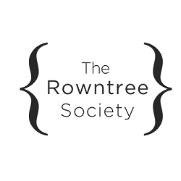Introducing the films
This short film is an introduction to the original archive sources, the background to Benjamin Seebohm Rowntree's English Life and Leisure and what the surveys can tell us about life in England in the post-war period. The film includes contributions from Dr Sally-Anne Shearn, Collections Information Archivist at the Borthwick Institute for Archives, and Dr Catherine Oakley, Executive Director of the Rowntree Society.
Explore the archives catalogue on Borthcat
Post-war England and English Life and Leisure
Benjamin Seebohm Rowntree and English Life and Leisure
Benjamin Seebohm Rowntree was a member of the famous Rowntree Chocolate family, and an influential figure in the development of sociology as an area of study. English Life and Leisure, his study of people’s leisure habits in the late 1940s, captures a distinctive moment in the country’s past. It’s a rich document for understanding the social history of mid twentieth-century Britain.
In the late 1940s, as Britain emerged from the Second World War and began to rebuild itself, Seebohm began to plan for a new research study that would explore “the cultural and spiritual life of the nation.” He employed G.R. Lavers as his research secretary, and assembled a team which also included the sociologist Ferdinand Zweig and Miss E.A. Walker.
This was the era of Mass Observation, the social research project carried out in Britain between 1937 and the mid-1960s which aimed to record the people’s everyday life: habits, emotions, relationships, and beliefs. The creators of the Mass Observation project hoped their work would offer a more accurate portrayal of the people of Britain than the one pictured in the media and held by politicians.
Rowntree and Lavers drew on the findings of the Mass Observation survey for their book on leisure. In the introduction to English Life and Leisure, the authors explained their study was also inspired by Seebohm’s impression of the lack of recreational activities available to people in the 1930s while he was working on his book Poverty and Progress (a follow up to his famous 1901 publication Poverty: A Study of Town Life).
But there was also a moral dimension to their efforts. They were interested in ways that people could spend their leisure time not just “happily” but also “wisely”.
It’s important to recognise that Rowntree and Lavers brought their own interests and motivations to the project, connected to their own particular positions and experiences in society. These influenced the design of the project, their approach to the interviews, and their findings. Both Seebohm and G.R. were men, and both were white. Seebohm was a wealthy industrialist with a keen interest in the wellbeing - and efficiency - of the workforce. He was also a Quaker, with a passionate belief in the spiritual value of religion.
As a result, English Life and Leisure was far from an objective study. Although the book is a fascinating document, it has significant problems, some of which were recognised even in its own day. The book aimed to “let a substantial number of men and women, of all ages and social classes, speak for themselves”. However, its authors recognised that some of the information they were seeking was “intensely personal” and decided that people wouldn’t respond honestly if they were interviewed formally or issued with written questionnaires. Instead, they used a method called ‘indirect interviewing’. This involved “making the acquaintance of an individual...and developing the acquaintance until his or her confidence is gained and information required can be obtained...without the person ever knowing that there has been an interview.” Although the people interviewed were not named in the book, this method of obtaining personal information without consent raises significant ethical issues.
Academic reception of the book highlighted the limitations of its methodologies and criticised its judgemental tendencies, although the public loved being able to peek into one another’s lives, with extracts printed in the tabloid press.
The idea of “leisure”
We typically think of “leisure” as “free time” - time spent away from paid work, domestic work, formal education and necessary activities such as sleeping. The things we do in our leisure time are typically those which we pursue for enjoyment, or for their own sake.
The idea of “leisure” we have today was developed during the Industrial Revolution. The development of capitalism led to the reorganization of people’s time into work and leisure (or “not work”) in new ways.
A number of economic and social changes from the early 1800s onwards transformed the concept and practice of leisure. Increased literacy rates meant more people could read books and newspapers. The development of the railways opened up new options for travel. And the success of trade unions in reducing the working week and obtaining paid holidays gave people more time to spend on activities beyond work.
For the purposes of their study, Rowntree and Lavers used the term “recreation” to describe leisure, which they defined as “the activities whereby men and women re-create themselves, not only in body, but also in mind and spirit.”
Return to the exhibition home page




